Having covered most of the vintage Aquastar models, it may come as a surprise to you that I have never blogged about a JeanRichard watch. Well, let’s set that straight.
(Click on the photo to enlarge)
Aquastar enthusiasts will undoubtedly be familiar with the name JeanRichard, as “Aquastar Instruments SA” was registered as a sub-brand of JeanRichard in 1962 by the then-owner, Frédéric Robert.
While some existing JeanRichard models have been transitioned to the Aquastar brand, the “Aquastart” remains shrouded in mystery with very little information available anywhere.
It is unclear how many were made exactly, or why. It was never sold as an official JEANRICHARD model, never featured in any promotional materials or catalogues, and perhaps only around ten are known in the world today, making it a rare find at the time.
An owner who purchased a collection of Aquastar/JeanRichard spare parts asked me if I would be interested in rebuilding as many of the working watches as possible, with a preference for Aquastars.
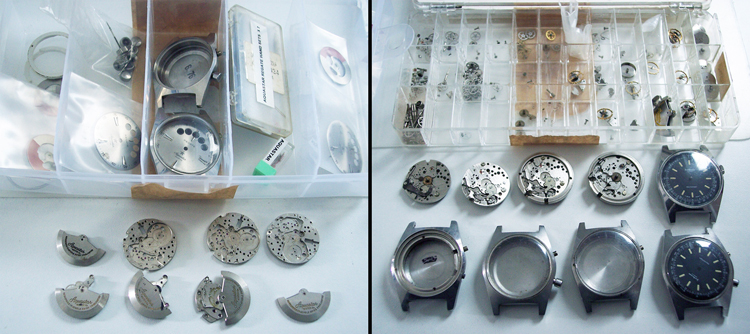
Normally I would have politely declined as they no longer work on Aquastar Sailing Timers due to the lack of available parts, but after seeing the photos and the many loose parts and partial movements available I was hopeful that with all the individual pieces I might be able to at least revive the Aquastart.
However, when the collection arrived, he was immediately concerned to discover that although there were seven damaged watches in various states of disrepair, they had already been cherry picked.
As anyone who has attempted to restore a Ferusa-powered Aquastar Regatta knows, timer-specific parts are specific to the 4000N calibre and are in very short supply, which can “kill the project.”
As you can see in the first photo, the watch arrived partially disassembled, the hands were removed and the timer pushers were missing.
Flip the watch over and you’ll immediately notice that this watch has a regular “star” shaped caseback rather than the monobloc case seen on earlier Regatta models (see a monobloc example here .) This turns out to be an interesting piece of the Aquastart puzzle, as the watch’s caseback does not have a serial number.

It is believed that all Aquastarts were produced without numbered cases, but with so few in circulation it is impossible to know for sure. The case back of this watch also still has most of its original wax seal, indicating that it has never been used.
Removing the caseback revealed the expected Ferusa cal. 4000N calibre, and I was pleased to see a simple yellow “Aquastar Geneve” branded rotor with the ribbed decoration seen on early Legato movements.

Although not working, the movement was relatively complete and appeared to be in fair condition. Removing the dial revealed that this movement had unfortunately also been vandalised – it was missing the timer disc, operating lever, drive wheel (the third wheel shaft had broken off) and tension spring, and required some cleaning.
Thankfully, after looking through other movements I found enough timer parts to rebuild a working movement… somehow!
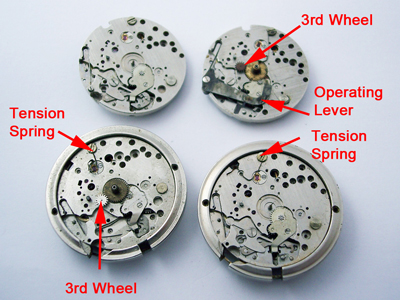
As there was only one operating lever, the possibility of producing any more clocks was quickly eliminated, and all tension springs present were in such a deteriorated state that they would require careful handling to be restored.
As mentioned in a previous Regate post, the geometry of the tension spring is very important for the timer mechanism to work properly. If it does not provide the right amount of friction, the timer will get stuck. (For more details on how the timer mechanism works, see this previous Regate post.)
After dismantling the movement, replacing any faulty parts, and putting it through the washer, the rebuild looked likely to be successful.
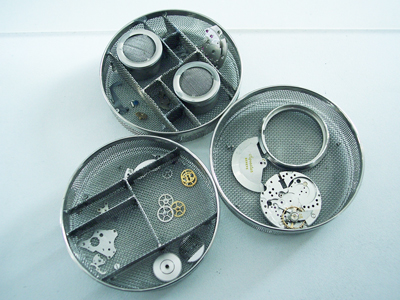
The purpose of this watch is not clear. The first thing to note is that it has the exact same movement and functions as a standard Aquastar Regatta Sailing Timer. That is, when the pusher is pressed, the sweep seconds hand returns to the top of the dial, and the timer disc below the dial moves to a “start” position and then slowly moves back to its original “stop” position for the next five minutes.
The main difference between the Legate and the Aquastart is that the latter doesn’t have an opening in the dial to activate the countdown timer, and since there’s no separate bezel or minute counter, it’s impossible to tell how many minutes have passed unless you’re looking carefully.
The dial has a tachymeter scale so it can also be used as a traditional chronograph, although since there is no way to stop the seconds hand, it is difficult to get an accurate reading.
As you can see here, despite the lack of a “dial window”, the Aquastart has a full timer mechanism underneath the dial.

With the movement restored and fully functional, we moved on to working on the exterior: the main case was cleaned, the pushers taken from the other case were polished, the original crystal was polished, a new caseback gasket was fitted and the caseback was meticulously cleaned by hand (although disappointingly much of the original sealing wax still flakes off at the slightest touch).
The last thing to do was to restore the set of hands. There were several sets to choose from so I decided to clean five sets in total and re-luminesce them in slightly different shades, choosing the one that, when dry, would best match the original lume on the dial.

Once that was done, the finish line was in sight and the watch could finally be repaired.
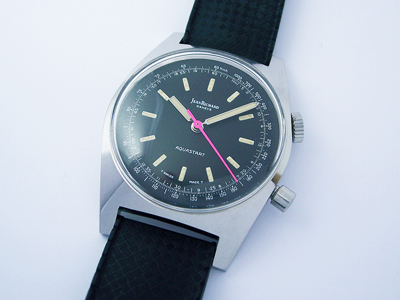

But the story doesn’t end there… Those with keen eyes may have noticed in the photo of the part above that there is another Aquastart dial hiding inside one of the cases.
After my success with the first watch, I checked all the parts again and thanks to the great work the owner did in sourcing the missing timer parts (thanks Ian!), I was able to repeat the whole process once more, giving me the rare opportunity to photograph two Aquastarts together – something I wouldn’t be able to repeat in a hurry.

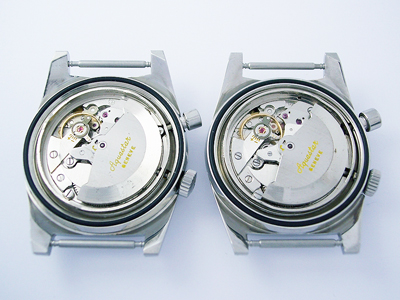
It is worth noting that the second watch has a serial number on the caseback but no writing on the outside of the caseback, something I have never seen before on an Aquastar or JeanRichard watch. As with the first watch, whether this is “correct” for an Aquastar caseback is up for debate.
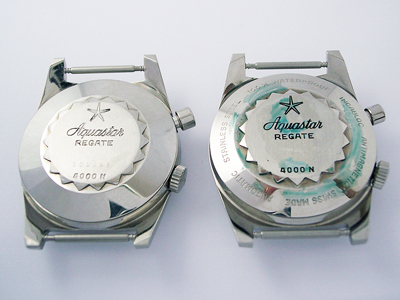
Are there many more out there? If you have a JeanRichard Aquastart or can provide any more information on the history of this model, we’d love to hear from you.
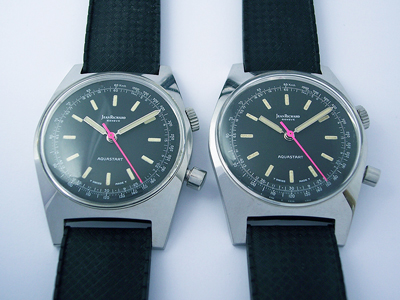
rich.
Special thanks to Ian Wilkinson for allowing me to feature his watch on the blog, and to Henrik from Heuer Chrono for helping me research the models.
The post JeanRichard Aquastart (Felsa Cal. 4000N)… appeared first on The Watch Spot
